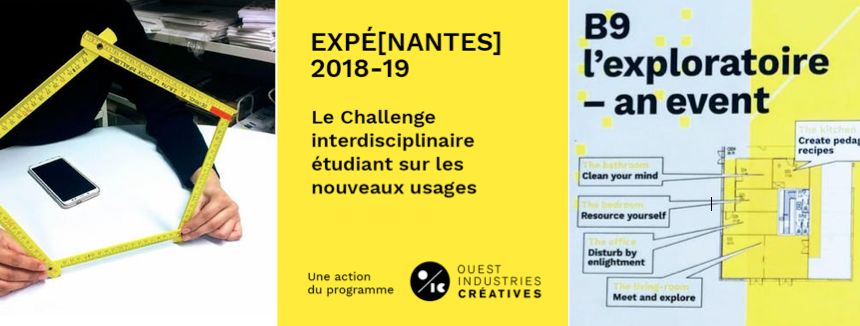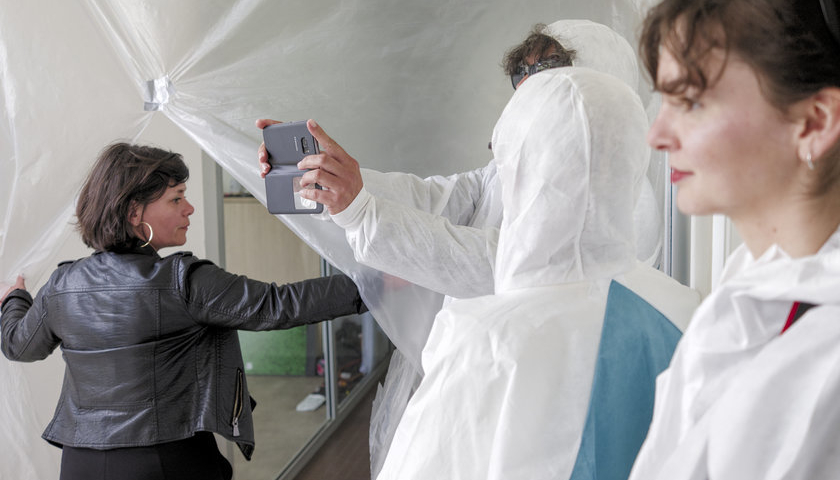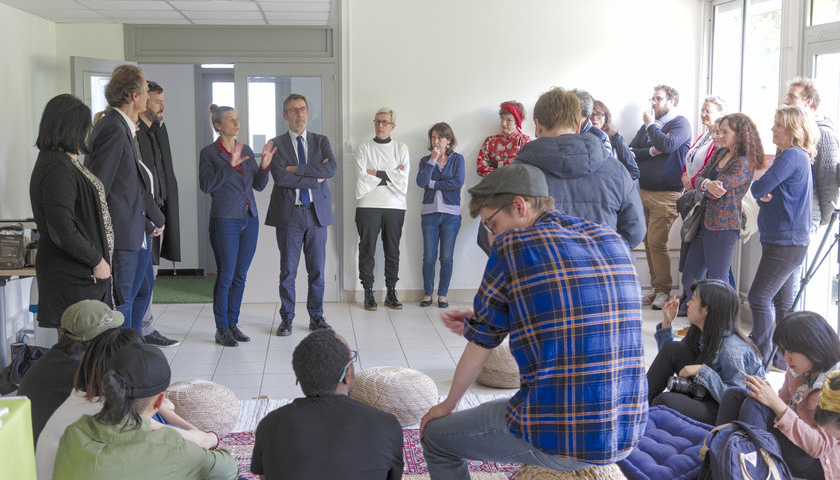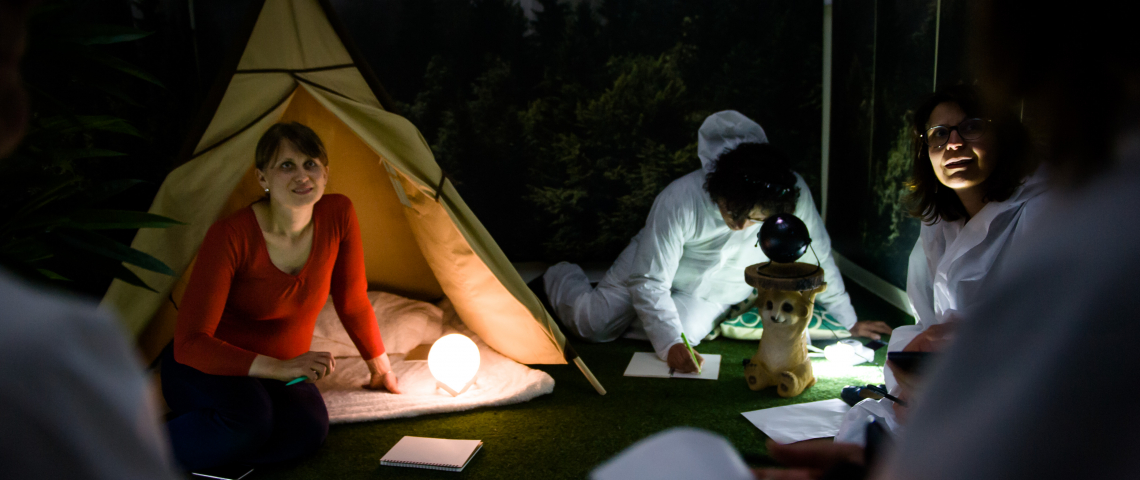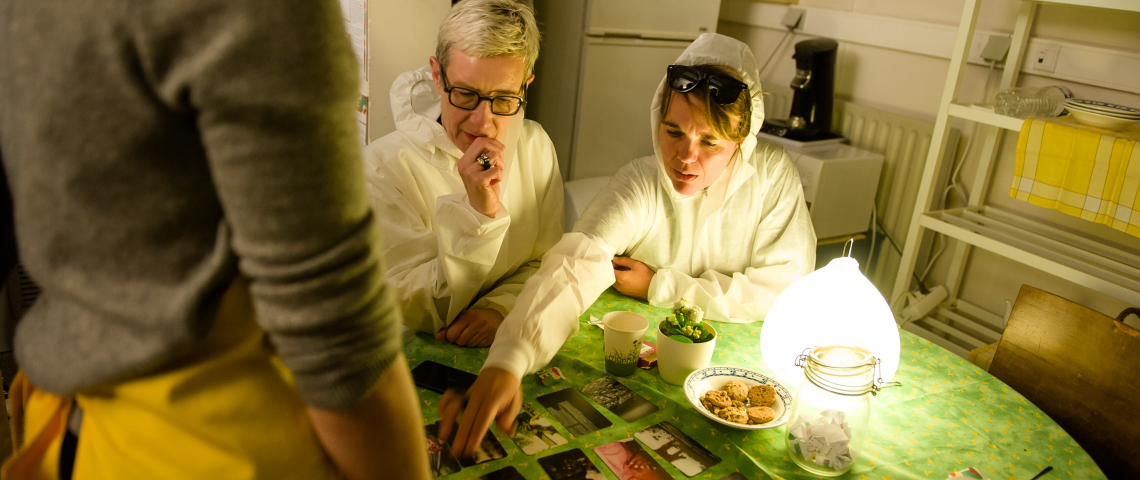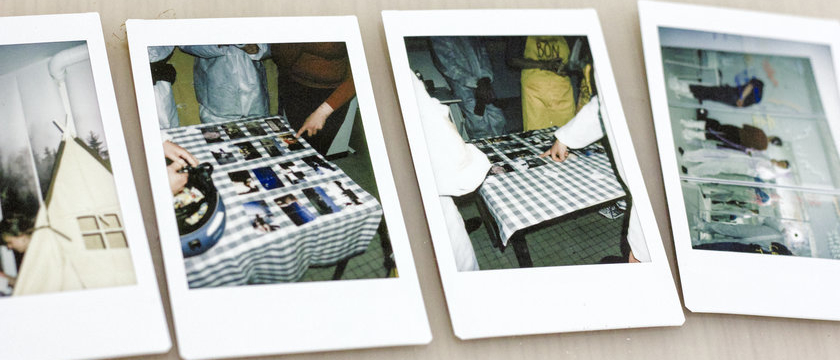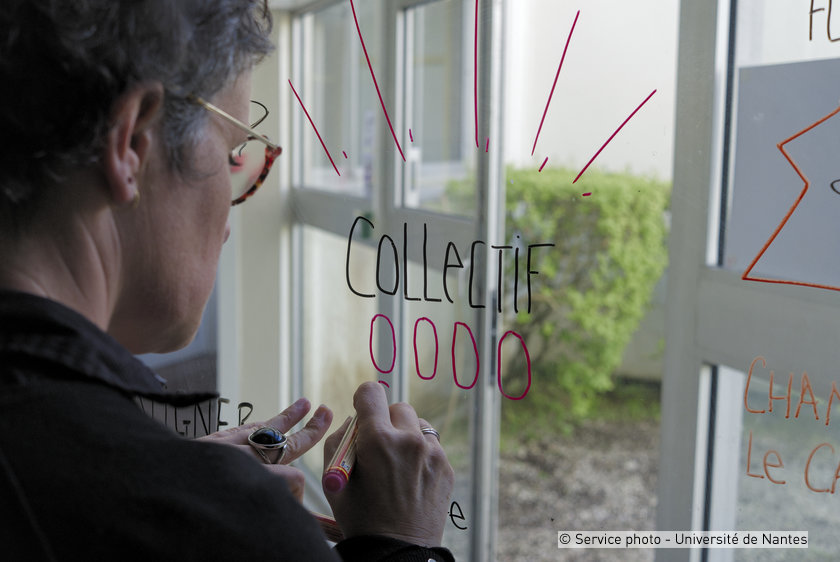The first edition of the interdisciplinary student challenge Expé[Nantes] of the West Creative Industries programme ended on 26 April with the event “B9 – l’exploratoire”. Conceived by the students studying on the Master of Science® Management & Entrepreneurship in the Creative Economy at the Audencia Business School and the Centre for Pedagogical Development (Centre de Développement Pédagogique, CDP) of the University of Nantes, it offered visitors the possibility to discover a place of ephemeral and sustainable learning experiences.
The Centre for Pedagogical Development (CDP) of the University of Nantes aims to promote and develop original and creative, hybrid and internationally-oriented educational and learning environments. It thus aims to create favourable conditions to facilitate the lifelong and continuous development of skills within the New University of Nantes (NUN), with the region’s scientific, pedagogical, technical, financial and expertise partners.
For the Challenge, the CDP’s new offices on the Lombarderie Campus were transformed for an afternoon into an immersive experience filled with learning approaches to evaluate and collect visitors’ expressions and ideas. The event held on 26 April was the occasion to inaugurate these new premises in the presence of Olivier Laboux, President of the University of Nantes.
This “B9 – l’exploratoire” event was the last stage of the first edition of the Expé[Nantes] Challenge, which saw the creation of four prototypes designed around the theme of third places installed in situ in the Nantes metropolis.
The students, working with the CDP team, deciphered, sequenced and then staged the optimal conditions for learning.
Visitors were thus able to discover several rooms dedicated to experiencing the stages of successful learning :
- a white room, in which everything served as a support for writing and finding inspiration;
- a tea ceremony to promote learning conditions through an exercise in Chinese calligraphy;
- a darkroom, which allowed visitors to unleash their creativity;
- a collaborative workshop to create recipes for new learning formats through a library of creative resources.
The visit ended with a time of reflective analysis accompanied by a scriber and dedicated to formalizing the experiences via a permanent graphic presentation, and then in a place where everyone could express and share their experience.
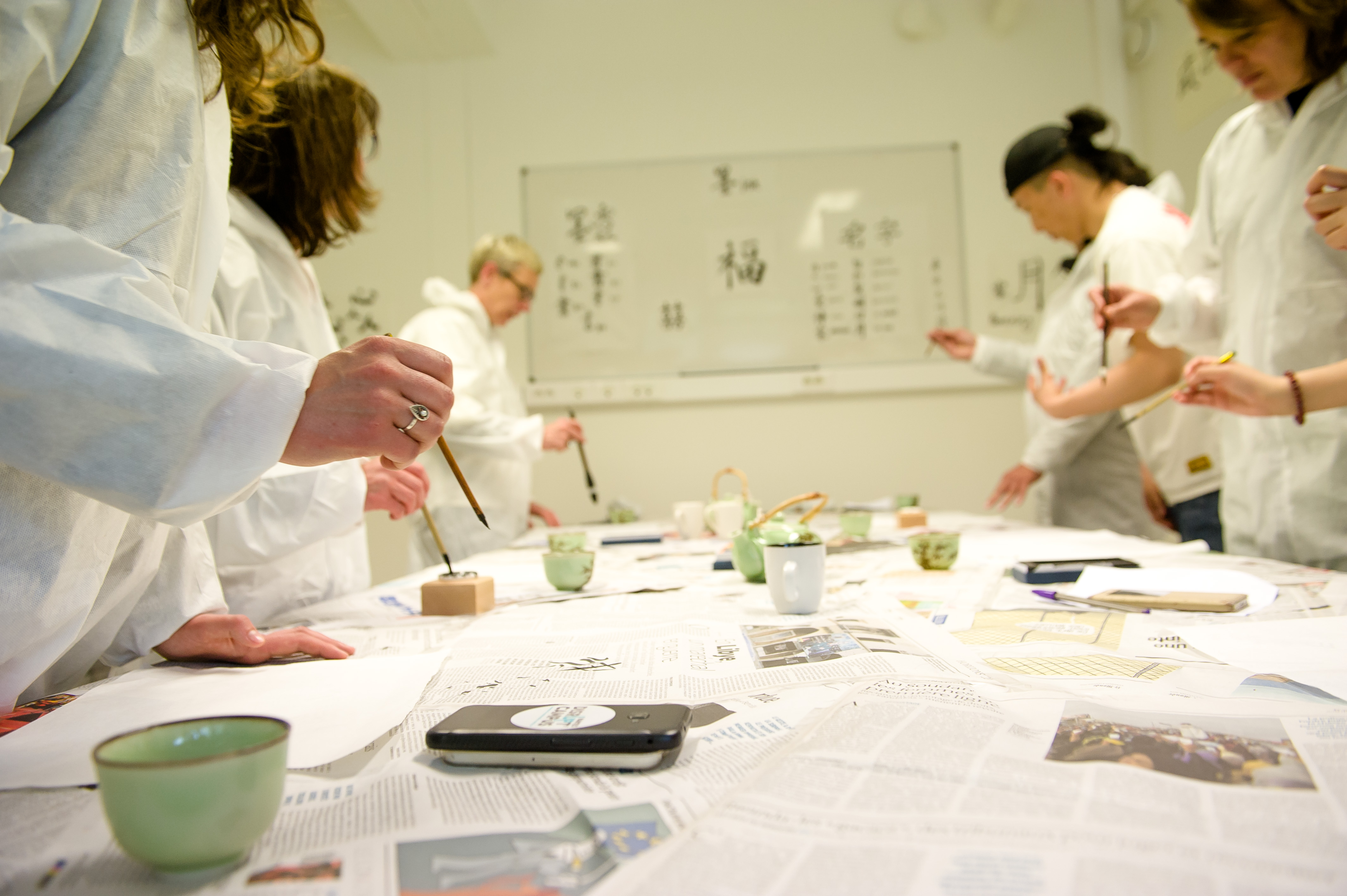
© P Cauneau / Audencia
The experience was both ephemeral and lasting.
Ephemeral because it existed only for half a day and lasting because the learning was acquired. While the objective was to use this event prototype to collect feedback on visitor learning, the concept of this educational experience could be applied to other places.


